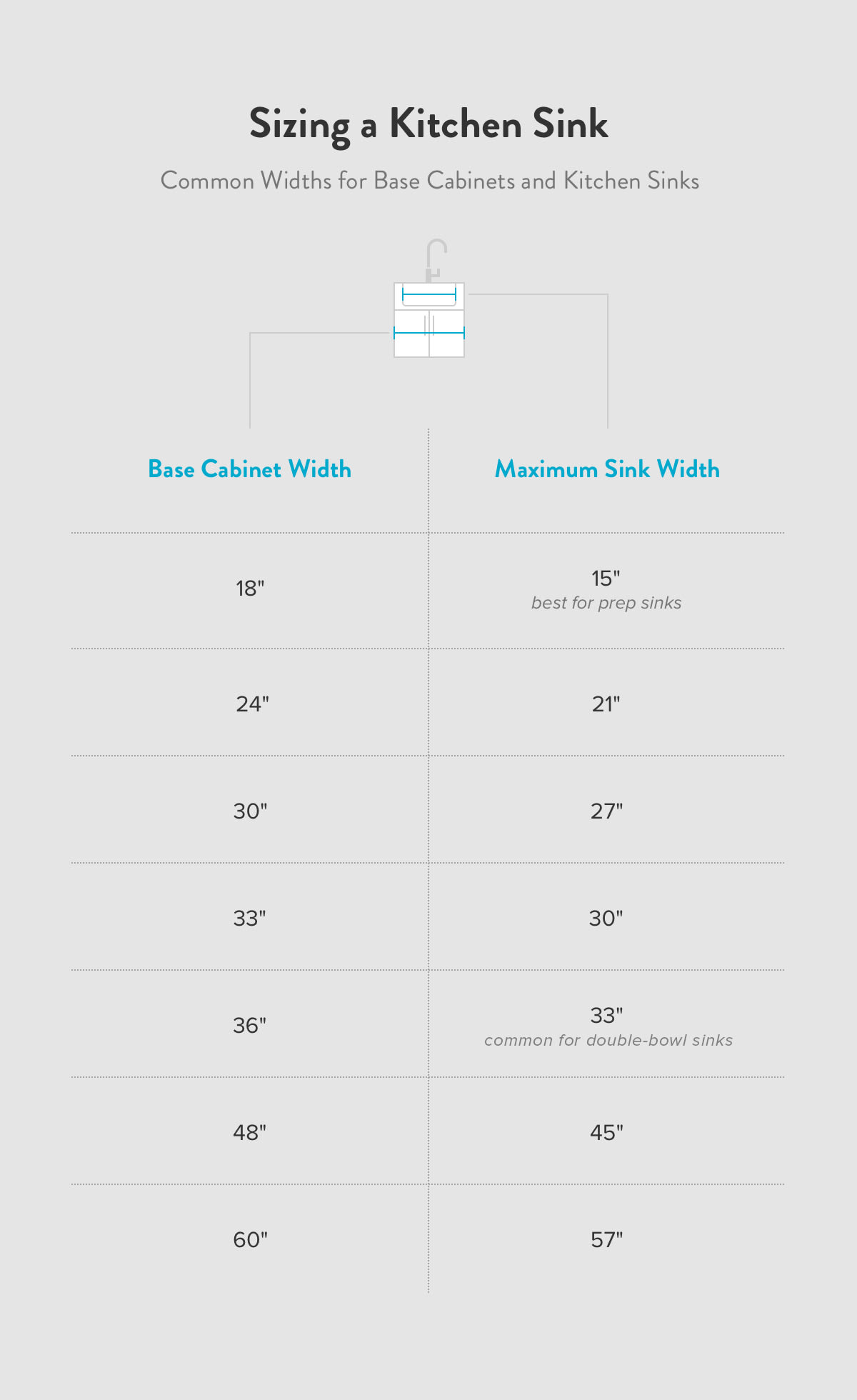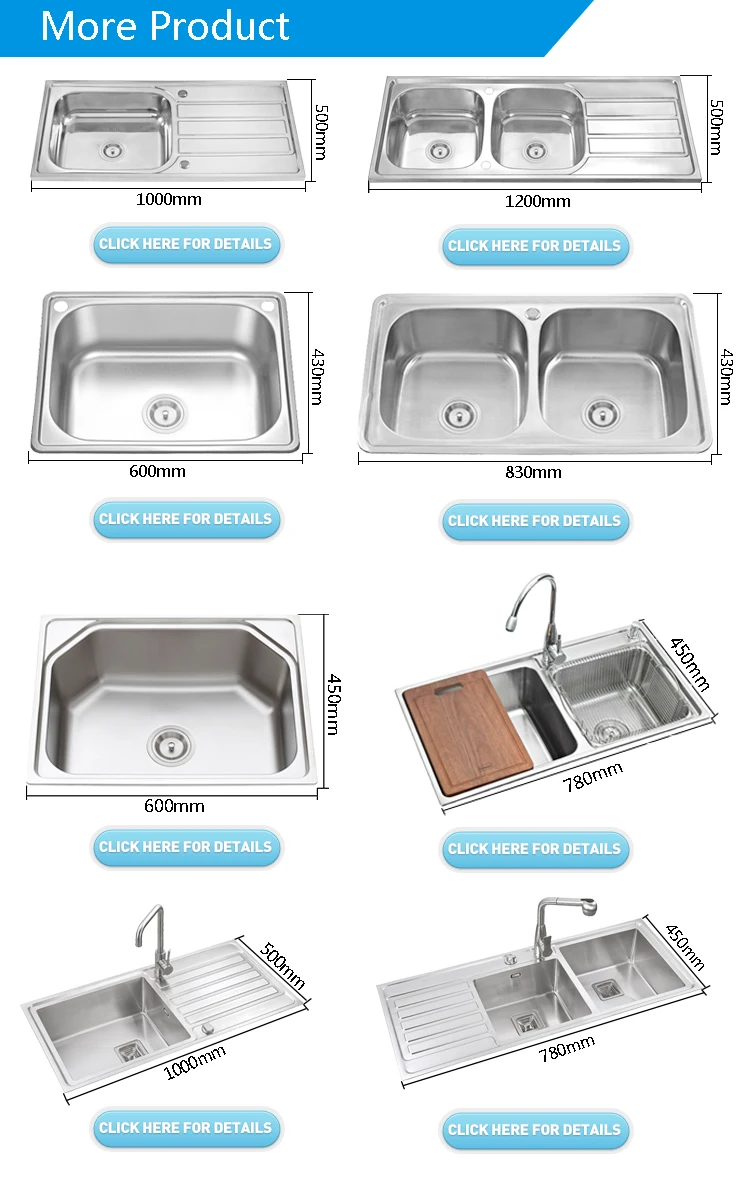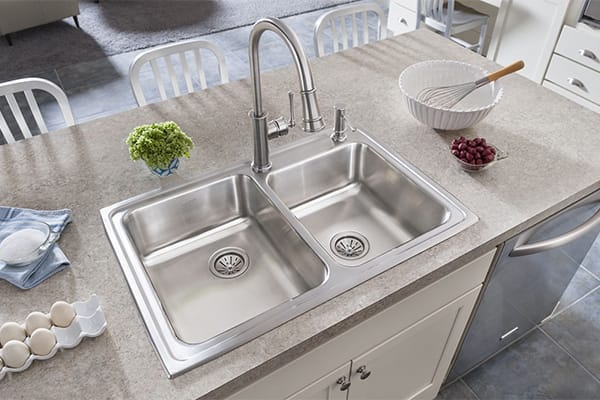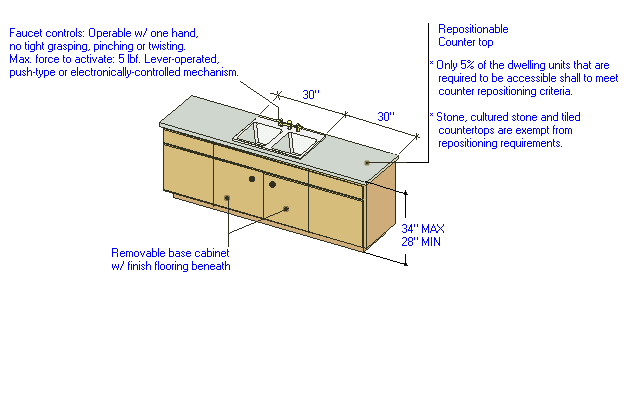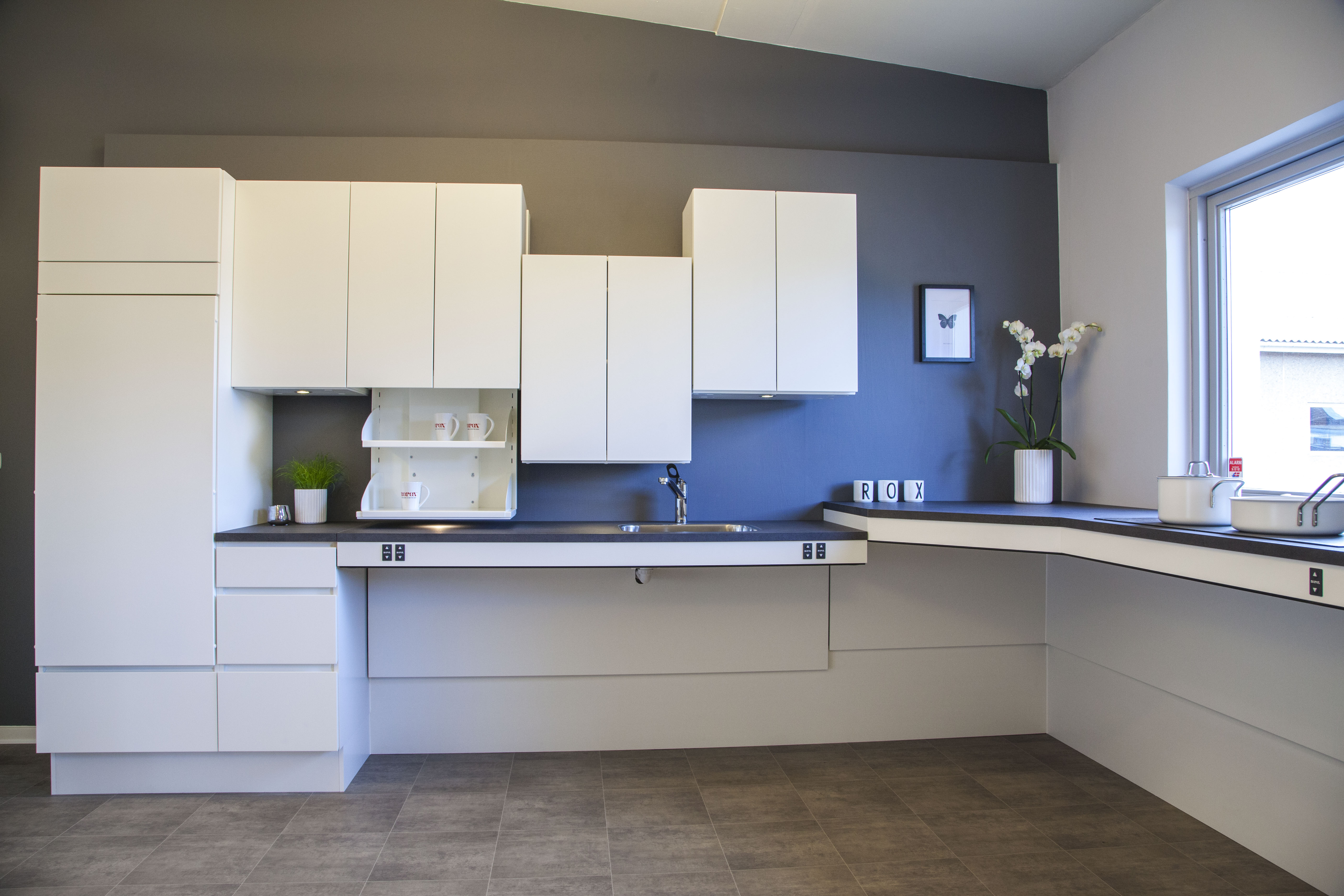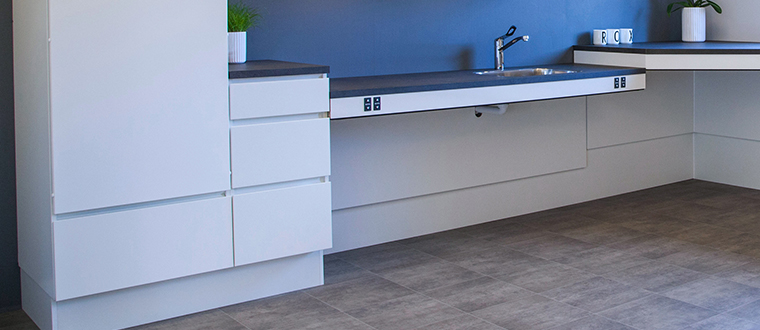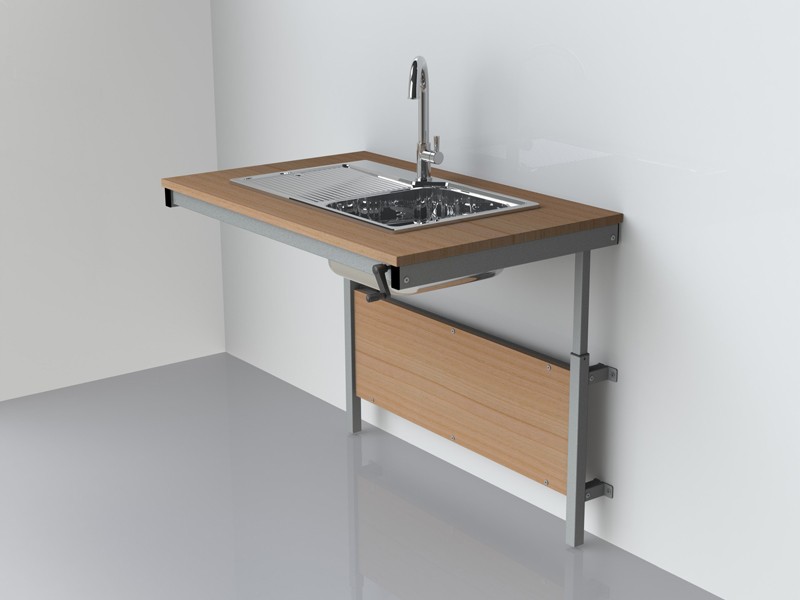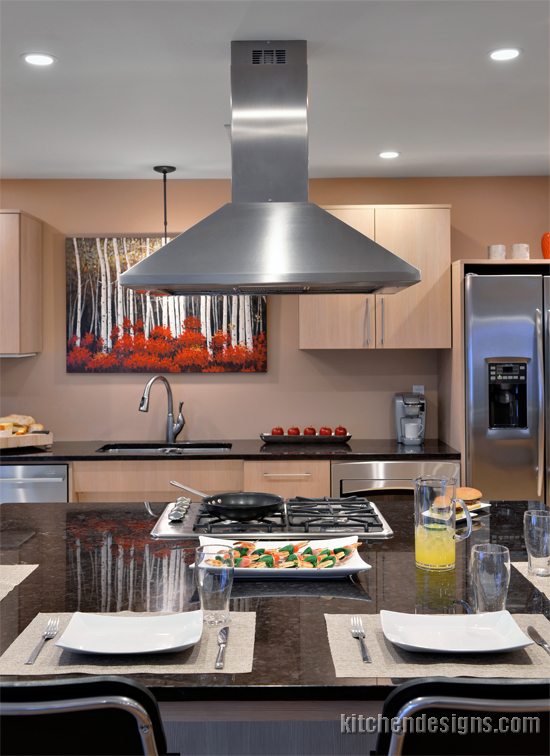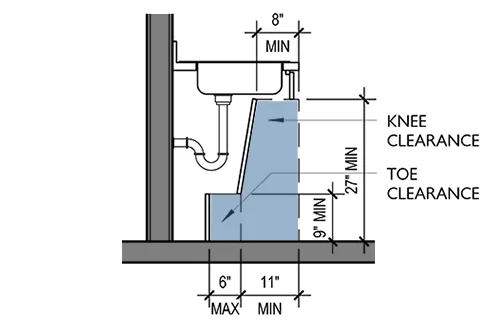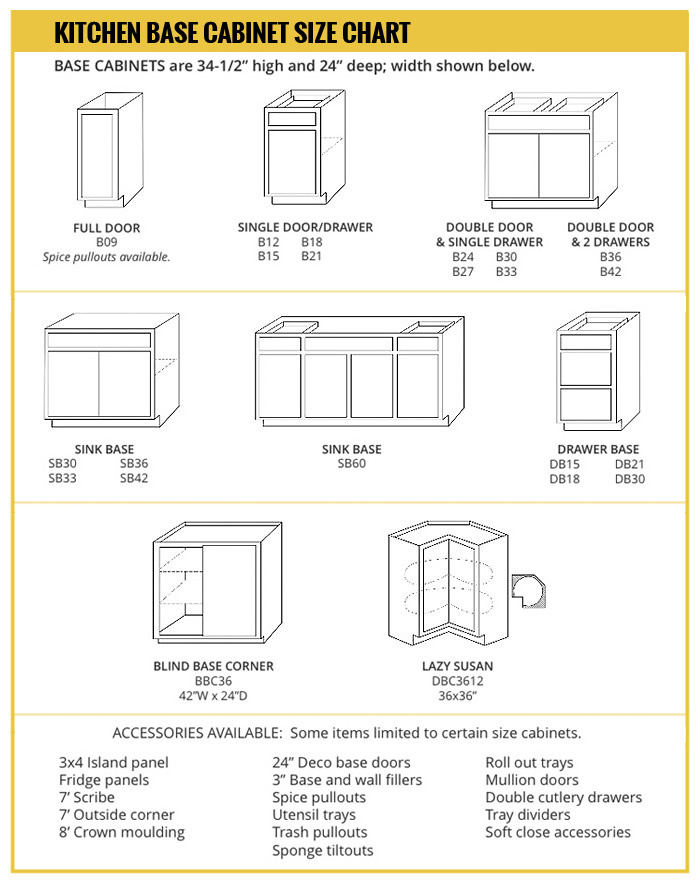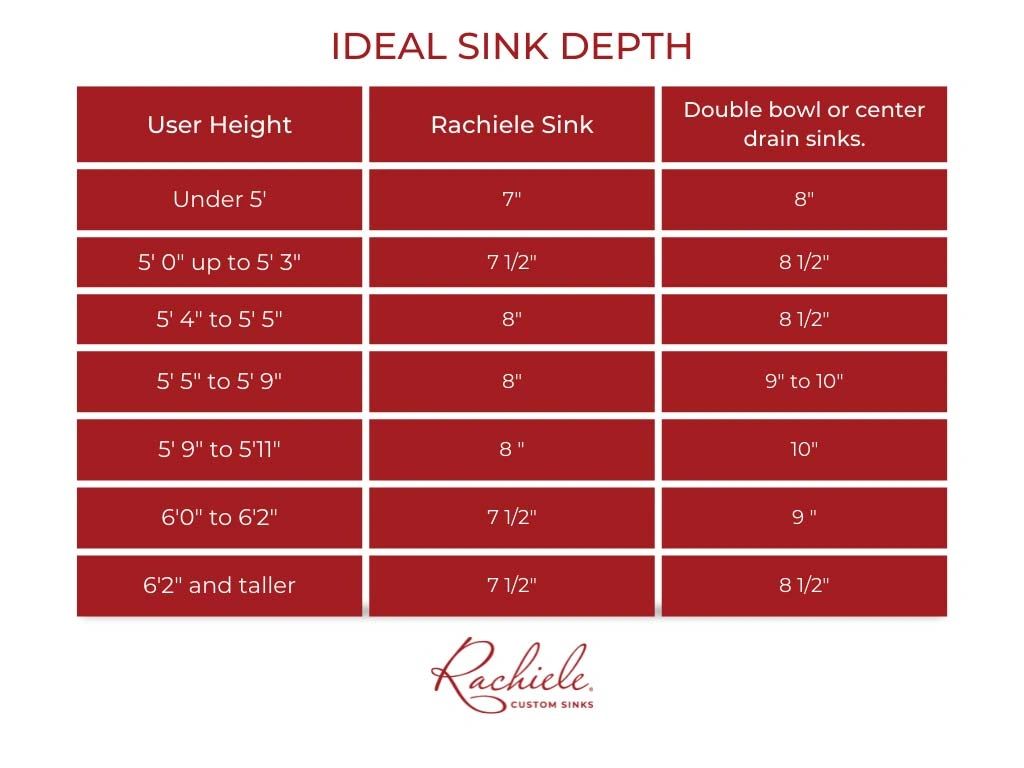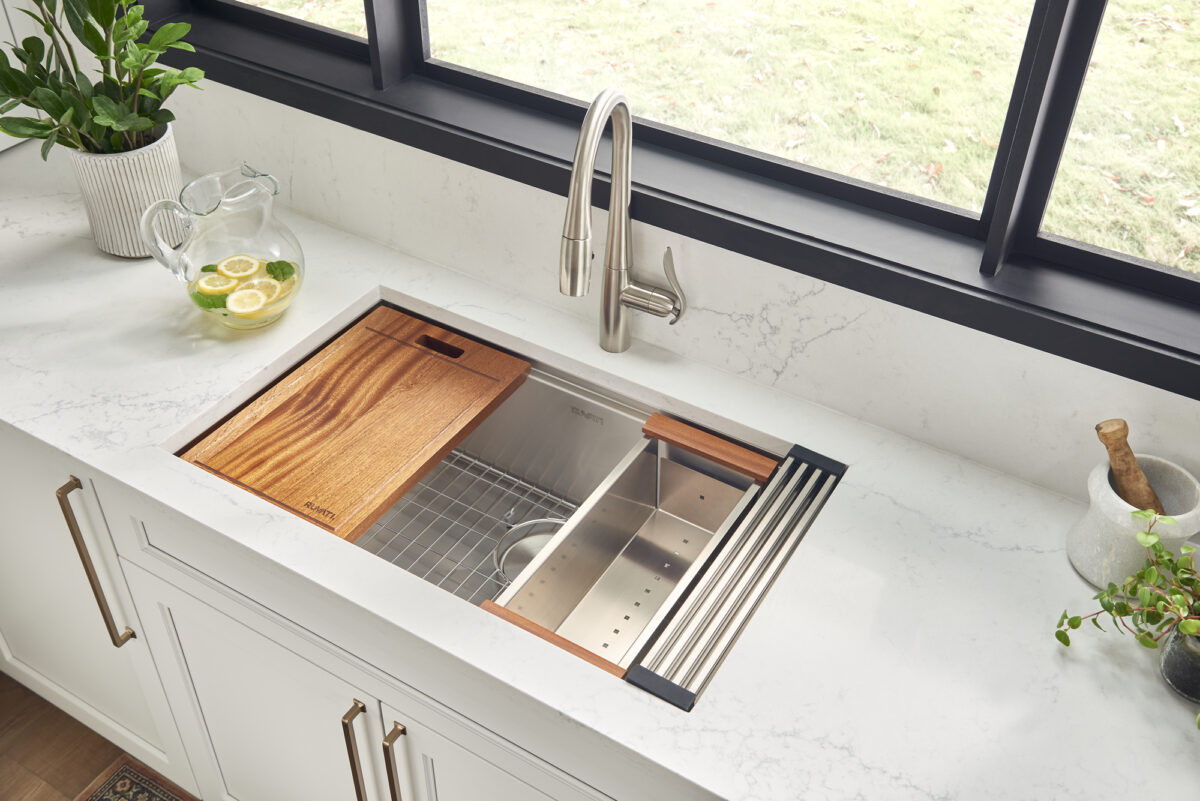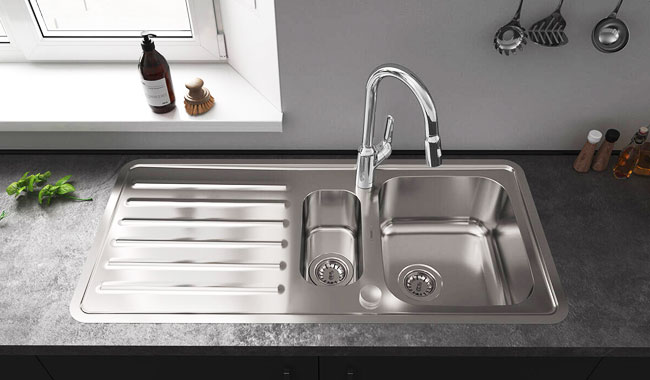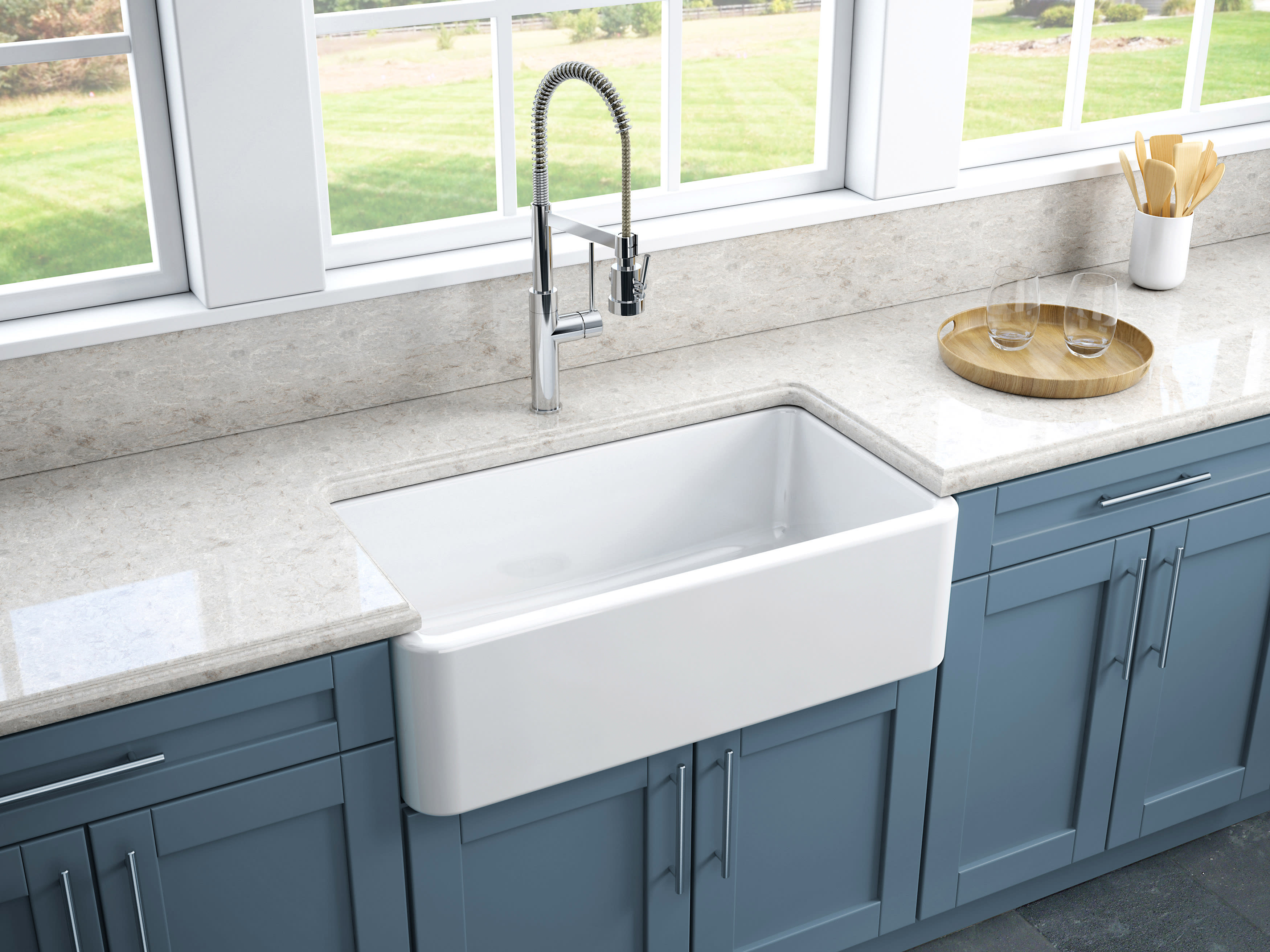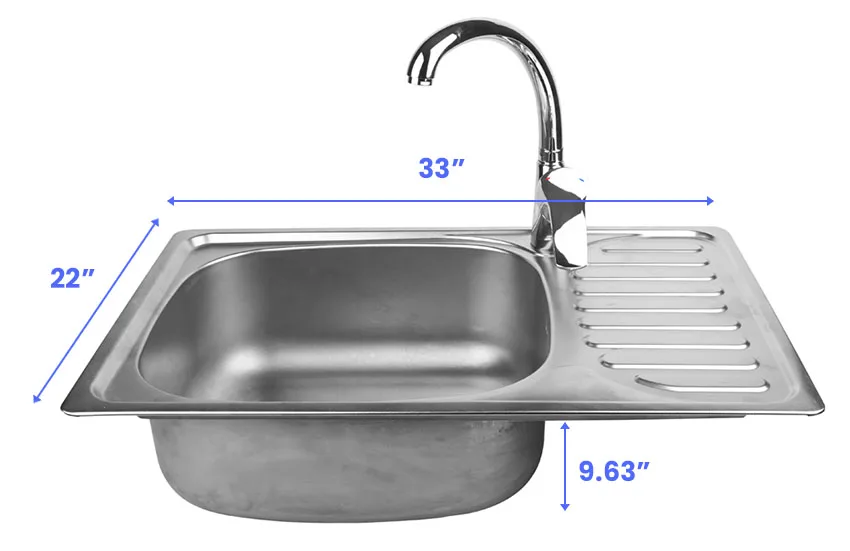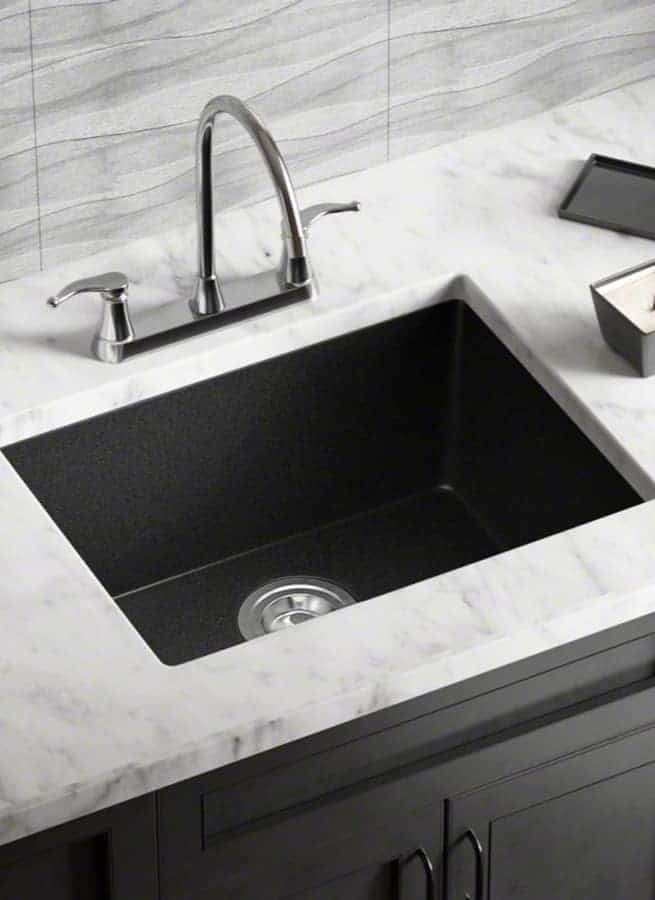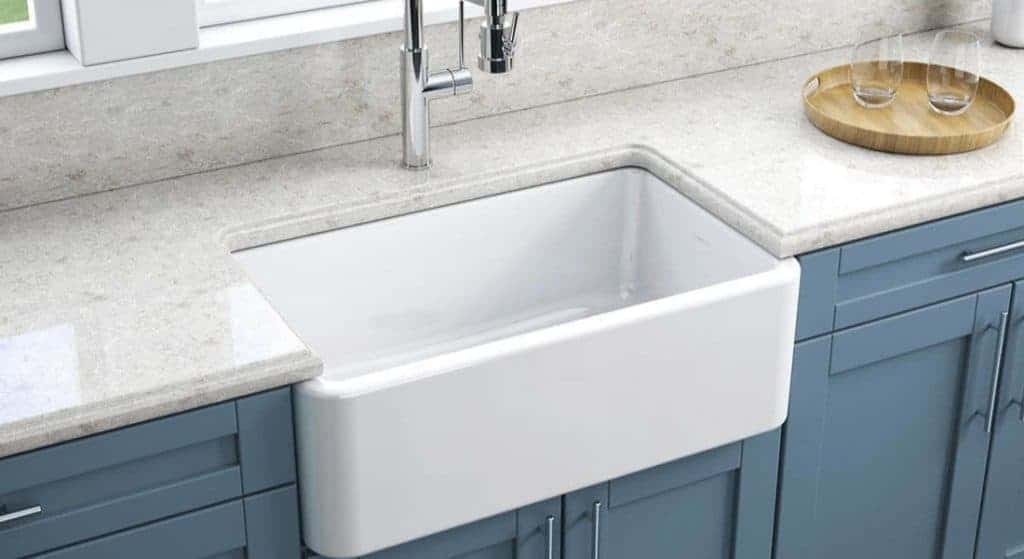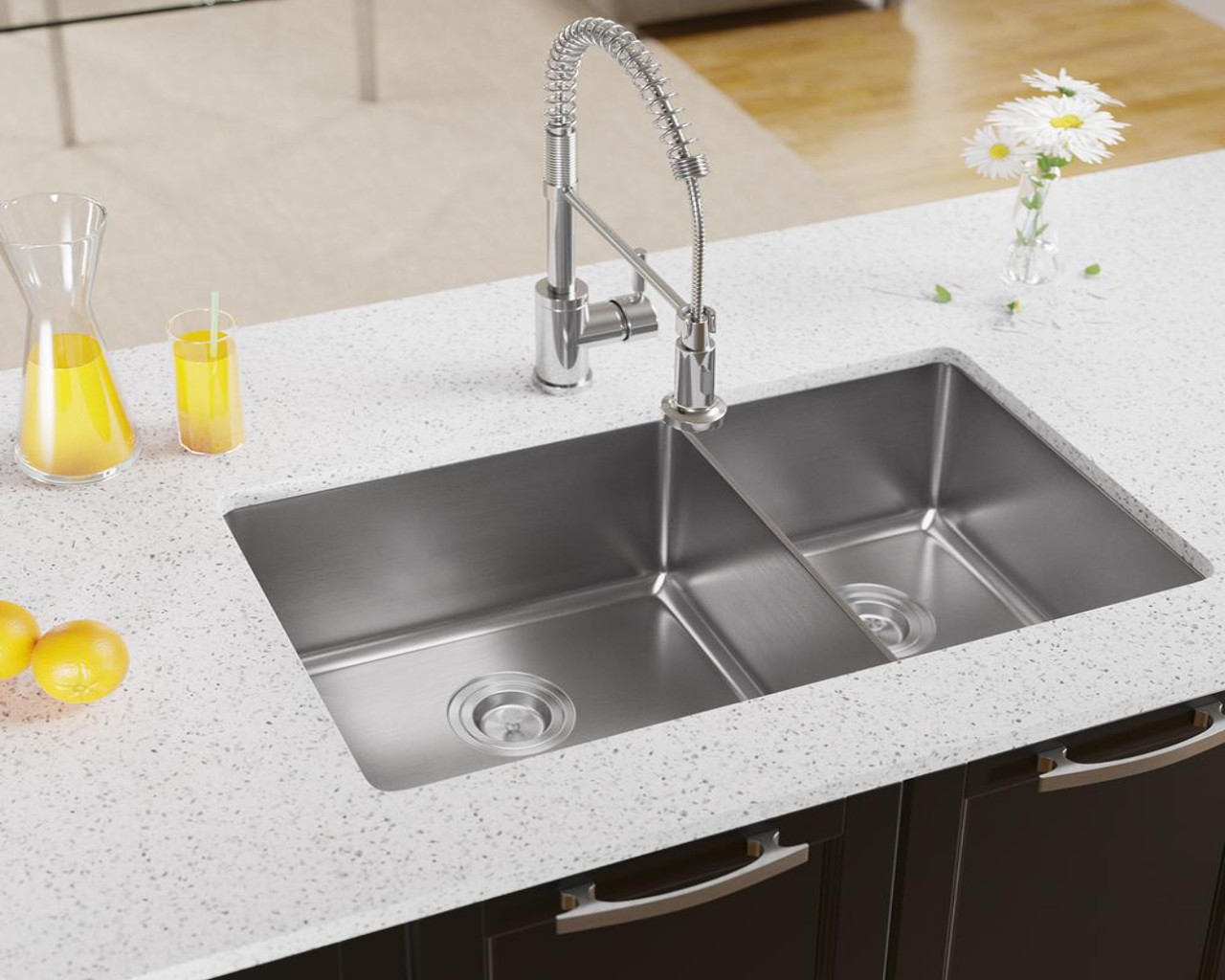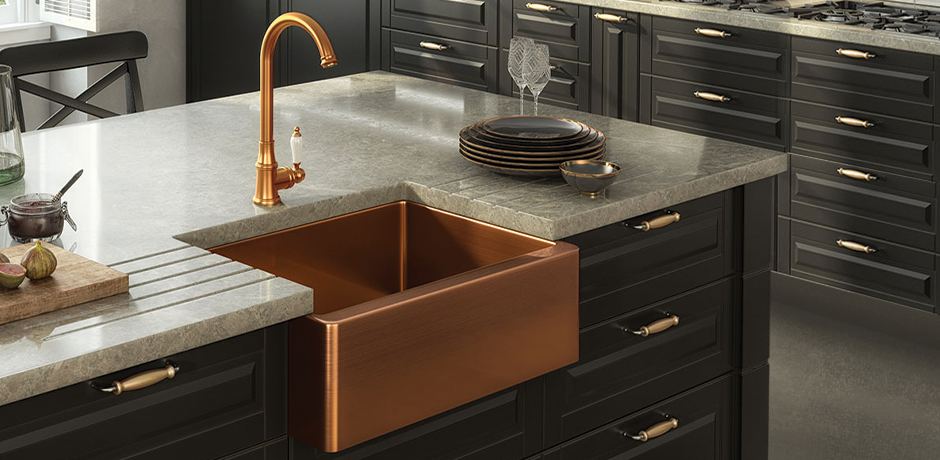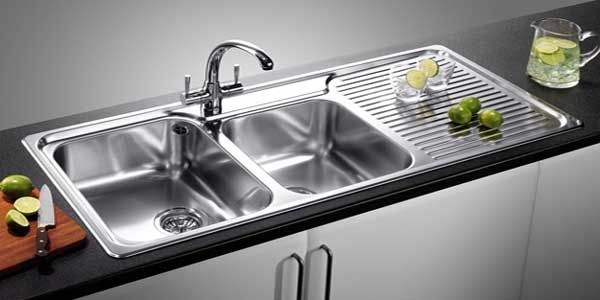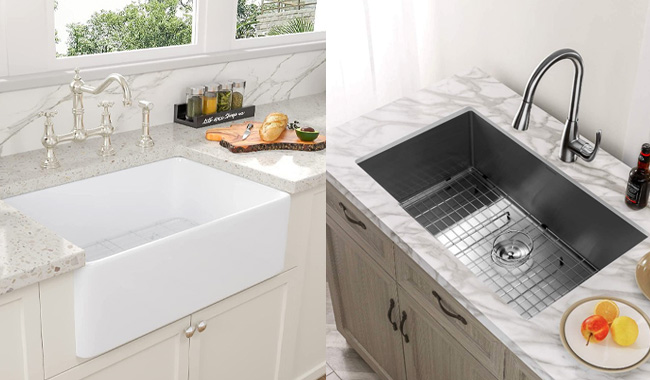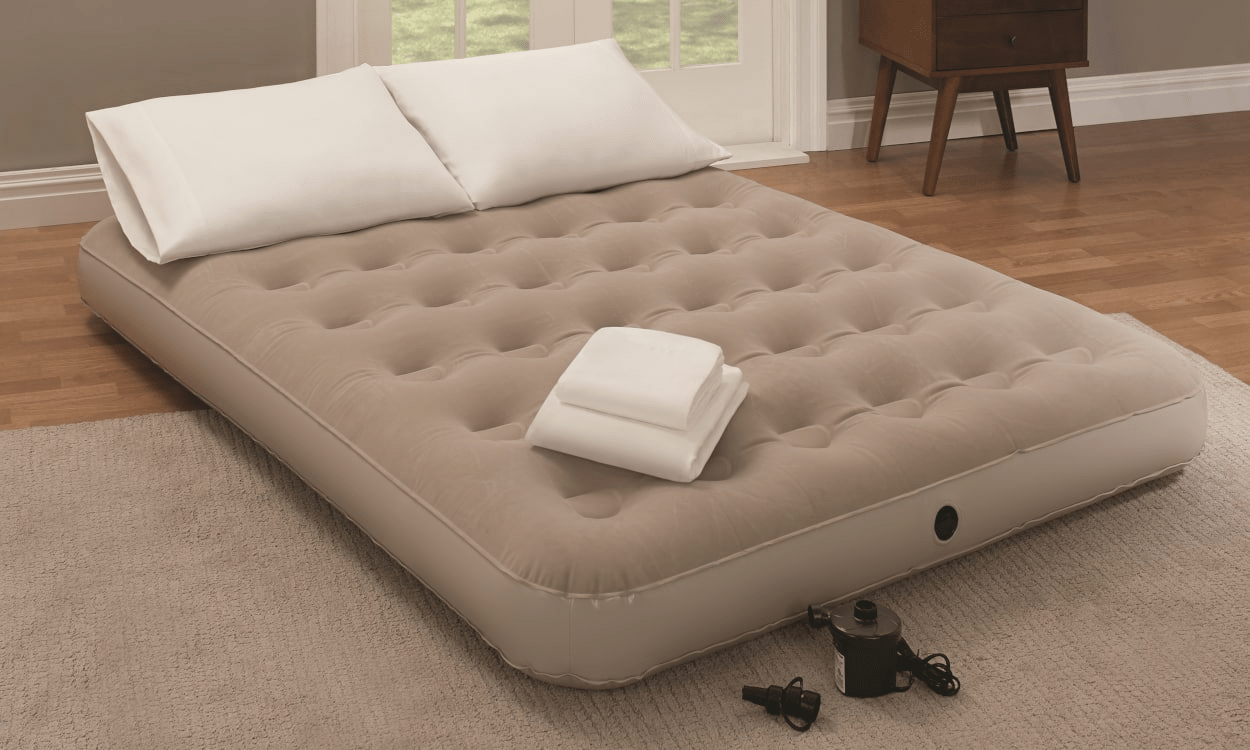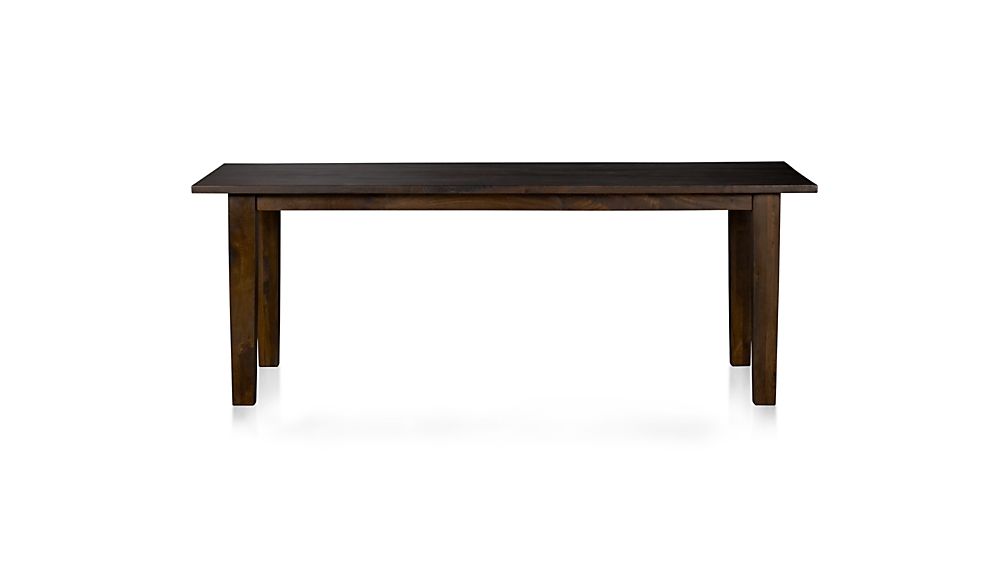When it comes to choosing a kitchen sink, one of the most important factors to consider is its height. The standard kitchen sink height is typically 36 inches, which is the industry standard for most homes. This height is considered to be the most ergonomic and comfortable for most people. However, it is important to note that this height may not be suitable for everyone.Standard Kitchen Sink Height: 36 inches
For those who are shorter or taller than the average height, the standard kitchen sink height may not be the most ideal. This is where the optimal kitchen sink height comes into play. It is recommended to have a sink height of 32 inches for those who fall into this category. This height allows for easier access to the sink and reduces strain on the back and arms while using it.Optimal Kitchen Sink Height: 32 inches
For those who have multiple people using the kitchen sink, an adjustable height sink may be the best option. This allows for the sink to be adjusted to different heights, accommodating for various users. The range of 30-36 inches is a good range to have for an adjustable kitchen sink.Adjustable Kitchen Sink Height: 30-36 inches
For those with disabilities or mobility issues, it is important to have a kitchen sink height that is compliant with the Americans with Disabilities Act (ADA). The recommended height for an ADA compliant kitchen sink is 34 inches. This allows for easier access for those in wheelchairs or with other mobility aids.ADA Compliant Kitchen Sink Height: 34 inches
The depth of a kitchen sink is another important factor to consider. The average depth of a kitchen sink is 8 inches, which is enough to hold a good amount of water and dishes. However, for those who do a lot of cooking and cleaning, this depth may not be enough.Average Kitchen Sink Depth: 8 inches
For those who are looking for a deeper sink, the recommended depth is between 9-10 inches. This allows for more room to stack dishes and pots and pans, making cleaning and cooking tasks easier. It also prevents water from splashing out of the sink.Recommended Kitchen Sink Depth: 9-10 inches
The width of a kitchen sink is also important to consider. The standard width for a kitchen sink is between 22-24 inches. This size is suitable for most kitchens and allows for enough space to wash dishes and prepare food.Standard Kitchen Sink Width: 22-24 inches
For those with larger kitchens or who do a lot of cooking and cleaning, a wider sink may be more desirable. The optimal width for a kitchen sink is 30 inches. This allows for more space to work with and makes it easier to clean larger pots and pans.Optimal Kitchen Sink Width: 30 inches
Similar to adjustable sink height, an adjustable sink width is beneficial for those with multiple users or who have varying needs in the kitchen. A range of 24-36 inches allows for the sink to be adjusted to fit different tasks and users.Adjustable Kitchen Sink Width: 24-36 inches
There are many different materials to choose from when it comes to kitchen sinks. Some of the most common materials include stainless steel, porcelain, granite, and fireclay. Each material has its own benefits and drawbacks, so it is important to consider your needs and preferences before making a decision. Stainless steel sinks are durable and easy to clean, making them a popular choice for many homeowners. Porcelain sinks are elegant and can add a touch of sophistication to a kitchen. Granite sinks are also durable and have a unique look, but they can be more expensive. Fireclay sinks are known for their durability and scratch-resistant surface, but they can also be pricey. Ultimately, the material you choose for your kitchen sink will depend on your budget, lifestyle, and personal preferences.Common Kitchen Sink Materials: Stainless Steel, Porcelain, Granite, Fireclay
The Optimal Height for Your Kitchen Sink
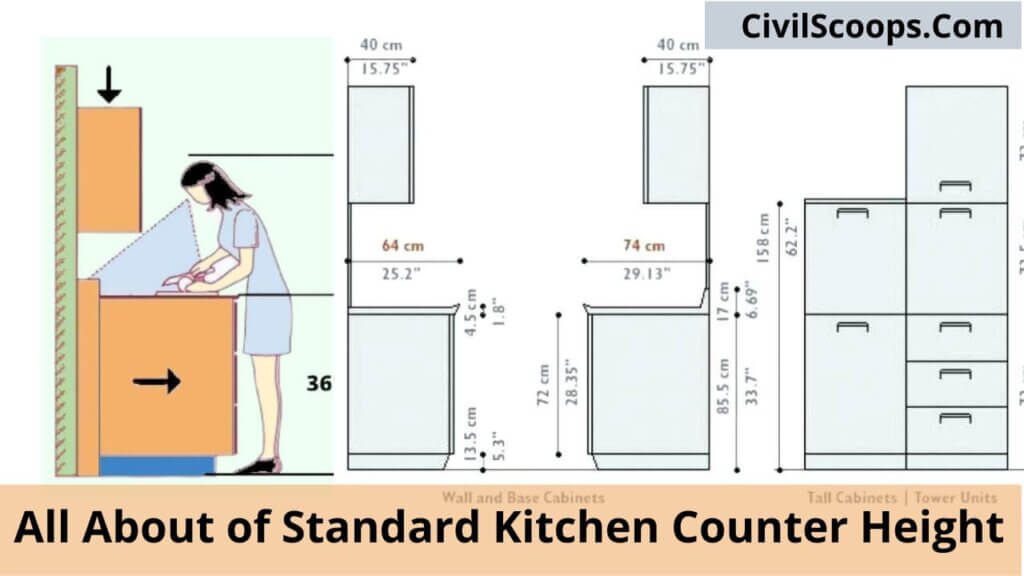
Creating a Functional and Ergonomic Kitchen Design
 When it comes to designing a kitchen, one of the most important factors to consider is the height of your kitchen sink. The sink plays a crucial role in daily kitchen activities such as washing dishes, preparing food, and filling up pots and pans. Therefore, it is important to carefully consider the height of your kitchen sink to ensure it is functional, ergonomic, and comfortable to use.
The Standard Height for Kitchen Sinks
The standard height for a kitchen sink is typically 36 inches from the floor to the top of the countertop. However, this measurement can vary depending on the height of the person using the sink and the type of sink being installed. For example, a taller person may prefer a slightly higher sink while a shorter person may prefer a lower sink.
Ergonomic Considerations
When determining the height of your kitchen sink, it is important to consider ergonomics. Ergonomics is the study of how people interact with their environment and how to design spaces that promote efficiency and comfort. In the kitchen, this means considering the height and placement of the sink in relation to other elements such as the countertop, cabinets, and appliances.
The Benefits of a Higher Sink
A higher sink can be beneficial for taller individuals as it reduces strain on the back and neck while washing dishes. It also allows for more space underneath the sink for storage and makes it easier to clean the area around the sink. However, a higher sink may not be suitable for shorter individuals or those who have mobility issues.
The Advantages of a Lower Sink
A lower sink can be advantageous for shorter individuals as it allows for easier access and reduces the risk of overreaching and injuring oneself. It also creates a more cohesive look in the kitchen as all elements will be at a similar height. However, a lower sink may not be ideal for individuals with back problems as it can require bending over for extended periods of time.
Customizing Your Sink Height
If you are unsure about the standard height for your kitchen sink, consider customizing it based on your personal needs and preferences. This could mean raising or lowering the sink based on your height and the tasks you will be using it for. It is also important to consider the depth of the sink, as a deeper sink may require a lower height to ensure comfortable use.
In Conclusion
In the end, the optimal height for your kitchen sink will depend on your individual needs and the layout of your kitchen. It is important to consider both functionality and ergonomics when determining the height of your sink. By carefully considering these factors, you can create a kitchen design that is not only aesthetically pleasing but also functional and comfortable to use.
When it comes to designing a kitchen, one of the most important factors to consider is the height of your kitchen sink. The sink plays a crucial role in daily kitchen activities such as washing dishes, preparing food, and filling up pots and pans. Therefore, it is important to carefully consider the height of your kitchen sink to ensure it is functional, ergonomic, and comfortable to use.
The Standard Height for Kitchen Sinks
The standard height for a kitchen sink is typically 36 inches from the floor to the top of the countertop. However, this measurement can vary depending on the height of the person using the sink and the type of sink being installed. For example, a taller person may prefer a slightly higher sink while a shorter person may prefer a lower sink.
Ergonomic Considerations
When determining the height of your kitchen sink, it is important to consider ergonomics. Ergonomics is the study of how people interact with their environment and how to design spaces that promote efficiency and comfort. In the kitchen, this means considering the height and placement of the sink in relation to other elements such as the countertop, cabinets, and appliances.
The Benefits of a Higher Sink
A higher sink can be beneficial for taller individuals as it reduces strain on the back and neck while washing dishes. It also allows for more space underneath the sink for storage and makes it easier to clean the area around the sink. However, a higher sink may not be suitable for shorter individuals or those who have mobility issues.
The Advantages of a Lower Sink
A lower sink can be advantageous for shorter individuals as it allows for easier access and reduces the risk of overreaching and injuring oneself. It also creates a more cohesive look in the kitchen as all elements will be at a similar height. However, a lower sink may not be ideal for individuals with back problems as it can require bending over for extended periods of time.
Customizing Your Sink Height
If you are unsure about the standard height for your kitchen sink, consider customizing it based on your personal needs and preferences. This could mean raising or lowering the sink based on your height and the tasks you will be using it for. It is also important to consider the depth of the sink, as a deeper sink may require a lower height to ensure comfortable use.
In Conclusion
In the end, the optimal height for your kitchen sink will depend on your individual needs and the layout of your kitchen. It is important to consider both functionality and ergonomics when determining the height of your sink. By carefully considering these factors, you can create a kitchen design that is not only aesthetically pleasing but also functional and comfortable to use.

